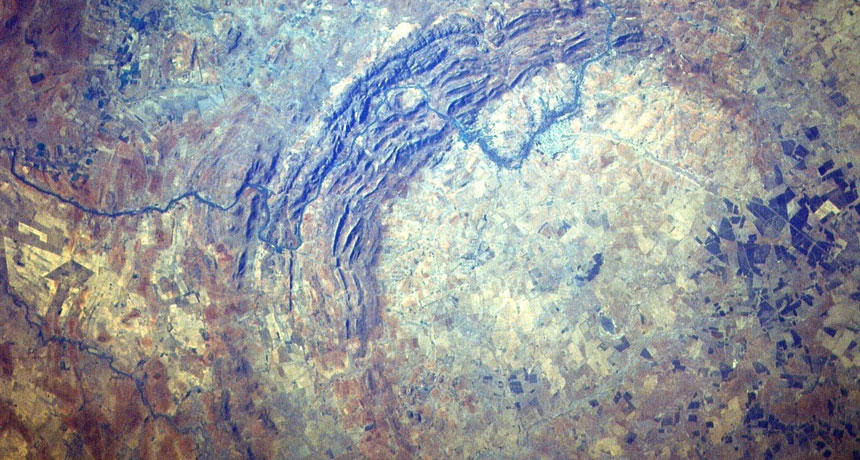Erosion has erased most of Earth’s impact craters. Here are the survivors
A recent discovery in Greenland may bring the known list to 191

BIG BLOW South Africa’s Vredefort crater, which formed an estimated 2 billion years ago, is the largest known crater on Earth.
NASA
When it comes to impact craters, Earth is the pauper of the solar system.
Even with a recent, still-to-be-confirmed crater discovery under Greenland’s ice, there are fewer than 200 known impact craters on the planet. Mars, for comparison, has hundreds of thousands.
Produced by falling space rocks, most impact craters on Earth have been wiped away over time by wind, rain, shifting ice and the crawl of tectonic plates. Here are the 190 confirmed survivors, as recorded in the Earth Impact Database, maintained by the University of New Brunswick in Canada — plus the newcomer in Greenland.
Identifying and studying such features could give scientists clues about the history of Earth, including the evolution of life itself. Researchers have tried to link various craters to the five known mass extinctions, for example. But only the space rock that created Chicxulub, hidden under Mexico’s Yucatán Peninsula and the Gulf of Mexico, is widely accepted as causing a major die-off. That space rock left a crater 150 kilometers wide and may have done in the dinosaurs and many other creatures about 66 million years ago (SN: 2/4/17, p. 16).
Popigai, in Siberia, which measures about 90 kilometers from rim to rim, might be connected to a smaller die-off of mostly marine creatures about 34 million years ago. But that’s far from settled.
Chicxulub and Popigai are the largest craters dating to the last 100 million years. But the roughly 160-kilometer-wide Vredefort crater in South Africa edges out Chicxulub as the largest known ever. Estimates put Vredefort’s origin around 2 billion years ago, making it the oldest known impact crater too.
It’s too early to put a precise date on the 31-kilometer-wide crater recently found in Greenland. Scientists think it probably formed from 11,700 to 2.6 million years ago, but narrowing down that estimate could be tricky. Like many of Earth’s impact craters, the Greenland crater is not exposed at the surface; it’s buried under nearly a kilometer of ice. Try drilling through that to get a good sample.
More impact craters may yet be found. A study in 2015 estimated that as many as 350 craters between 0.25 and 6 kilometers in diameter remain undiscovered on Earth (SN: 7/25/15, p. 5).







